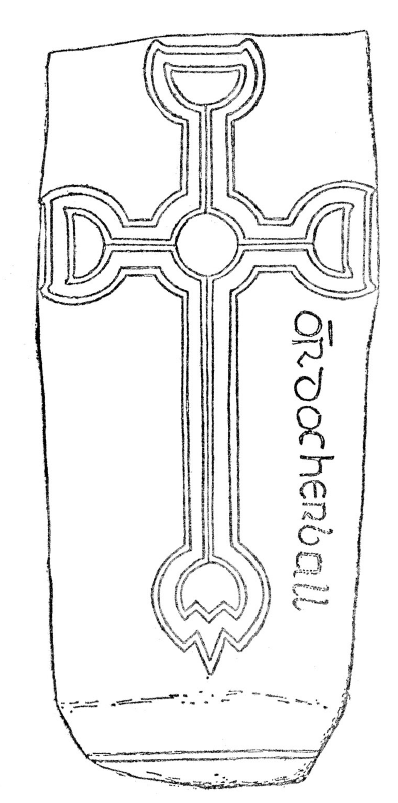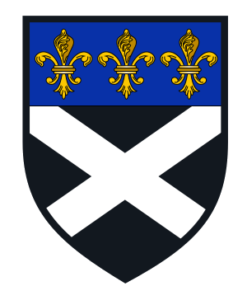Clan Fitzpatrick History
Fitzpatrick is the English form of the Irish surname Mac Giolla Phádraig. It is the only extant Irish surname with the Fitz- prefix that is not of Norman origin. Translated, the name means the “son of the devotee of St. Patrick”. This name is ancient, having been used by the same unbroken male lineage for over one thousand years of Irish civilization since surnames were commonly introduced in the 11th century, and this same lineage continues further back another thousand years before that.
Osraige
The ancient Irish kingdom of Osraige (modern “Ossory”) was founded by Óengus Osrithe in the latter half of the 2nd century of the Christian era. His son and heir, king Lóegaire Birn Búadach (Leary Birn “the Victorious”) gave to his own descendants the epithet “Dál Birn”, translated as “Birn’s portion”. The native kings of Osraige carried this designation in an unbroken male lineage down through history, through the earliest Christian mission to Ireland by St. Ciarán of Saighir prior to the arrival of St. Patrick in 432 AD, and beyond the reign of the famous king Cerball mac Dúnlainge who ruled from 842 to 888 AD. Basing his capital in what is now Kilkenny city on the River Nore, Cerball was likely the most powerful king in southern Ireland during his era, as Osraige rose to become a major power in Irish and Viking politics. King Cerball was long remembered for his martial prowess by the Irish and Vikings alike: his life is colorfully related in the Fragmentary Annals of Ireland, and he is also remembered in the Viking sagas as Kjarvalr Írakonungr, “Cerball, king of the Irish.” He was also the ancestor of the powerful O'Brennans of Idough, kindred clan to the Mac Gilla Pátraics.
Cerball’s descendant, king Gilla Pátraic reigned from 976 AD until 996 AD and is the eponymous source of our surname. Donnchadh, son of Gilla Pátraic, became overking of Leinster and Osraige, and was the first recorded person to take the name Mac Giolla Phádraig. The Annals of Tigernach note his death in 1039 AD, calling him "the champion of Ireland." His descendants were thereafter styled Mac Giolla Phádraig, and the name appears often as a first name and last name of many of the Osraige dynasts for the next century. Prior to the Norman invasion into Ireland 1169, the kingdom of Osraige had split between two rival factions of the Mac Giolla Phádraig clan and their clients. The Norman invasion specifically targeted Osraige, and many of the initial battles occurred within the kingdom. Eventually Osraige witnessed the arrival of king Henry II of England with one of the largest military forces ever to land in Ireland, and later had to contend with the arrival of William Marshall (eulogized as ‘the greatest knight that ever lived’) who took Kilkenny and built a castle there. The Mac Giolla Phádraigs lost most of Osraige in this invasion, but held on to the northern portion of their kingdom in the Slieve Bloom mountains, known ever after as Upper Ossory, in present-day County Laois. Branching off from the Mac Gilla Pátraic clan sprang the Costigan (Mac Ostigan) and O'Dunphy (Ó Donnchaidh) septs of Upper Ossory, who are cadet lines of our clan. yDNA analysis has also revealed a distinct branch of Fitzpatrick bearing the surname Dalton, with no genetic connection to the Anglo-Norman family of the same name.

Grave slab cross of king Cerball mac Dúnlainge (King of Osraige AD 842 - 888); paternal ancestor of the Mac Giolla Phádraigs of Osraige. The slab reads "Or do Cherball" ("Pray for Cerball"). Copyrighted image use from Joan Newlon Radner’s translation of The Fragmentary Annals of Ireland (1978), courtesy of the School of Celtic Studies of the Dublin Institute for Advanced Studies.
As part of the colonization of Ireland by England in the 16th century, natural Irish surnames began to be restyled in the English format. Accepting the Tudor policy of surrender-and-regrant, The Giolla Phádraig submitted to Henry VIII in 1537. As a result, Brian, the first to agree to the surname Fitzpatrick in place of Mac Giolla Phádraig, was ennobled in the English system as Lord Baron of Cullahill and Castletown in 1541, and his clan followed suit. At that time he was typically styled McGilpatrick and the English format was Fitz-Patrick. In the 17th century, the Fitzpatricks lost considerable territory through their staunch resistance to the Cromwellian invasion and later for their support of James II. Nevertheless, the head of the clan received a peerage in 1714. Records from 1878 show that no less than 22,000 acres of the finest land in Upper Ossory was owned by the family. From 1541 to 1937, the head of this family bore titles of Baron of Cullahill and Castletown, Lord of Upper Ossory, Lord Gowran, Earl of Upper Ossory and Lord Castletown.
In 1854 a scholar at Trinity College Dublin writing in The Dublin University Magazine wrote, "Ledwich, who is surly enough on Irish matters, when enumerating the Church livings and broad lands of John FitzPatrick, late Earl of Upper Ossory says, 'Patrimonies which descent to him through a long line of noble progenitors for more than a thousand years, an instance not to be paralleled in Europe'." (*Anonymous; 1854) As continuous heirs living on the ancient lands of Osraige from the time of Óengus Osrithe, down through 1937 and continuing to today, the Fitzpatrick - Mac Giolla Phádraigs are truly one of the world’s oldest dynasties.
The Fitzpatrick, An Giolla Phádraig, Chief of his name, continued to be ennobled in the English system up to the 2nd Lord Castletown who died in 1937 without male heir. In 2000, Steve Zalewski and Ronan Fitzpatrick embarked on a task of documenting the descendants of Bryan Fitzpatrick, Lord and 1st Baron of Upper Ossory with a view to identifying The Giolla Phádraig. Their work has clarified a number of significant lines through which the title, honour and dignity might descent. These are not a complete set of lines and some lines are incomplete in themselves. Others are complete to living male descendants who live in Ireland, England, Australia and the United States. This very important work continues.
Beyond Osraige
While the principal concentration of Fitzpatricks remains in Counties Laois and Kilkenny, the Society has brought other less-well known Fitzpatrick lines into greater light. As the medieval name "Giolla Phádraig" became more widespread outside of Osraige, it was perhaps inevitable that other Mac Giolla Phádraig clans would naturally arise, each bearing its own unique history and genetic signature. It is thought that the name Fitzpatrick became the standard anglicized form for Mac Giolla Phádraig throughout Ireland, but different Irish surnames, such as Ó Maol Phádraig and others, may have also anglicized this way also. County Cavan has an especially strong and historically significant representation of Fitzpatricks which is numerically after the Laois/Kilkenny-Osraige region; followed by Counties Down, Cork, Dublin, Clare, Tipperary, and Fermanagh, respectively. Many of our members trace their Fitzpatrick lines to these parts of Ireland. The name is also strong in Counties Kildare, Carlow, and Monaghan. Other communities around Ireland also came to bear the surname from their progenitors, who were also named Giolla Phádraig. One line of northern Fitzpatricks shows a significant genetic link with the Maguires of Fermanagh, while another shows links to clan Magennis. Other Fitzpatrick lines show historic connections to Scotland where surname variants overlap between several unrelated clans. The surnames Kilpatrick, MacPatrick, and Patrick all have historic septs within the Irish Fitzpatrick, and Scottish Kirkpatrick, Lamont, and MacLaren clans. Other bearers of the Fitzpatrick surname are genetically distinct, with no obvious connections to any wider surnames. Some lines have strong paper genealogy trails long back through centuries, while others continue their hunt with the help of this Clan Society. The Fitzpatrick y-DNA surname study, launched within the context of this group by Dr. Colleen Fitzpatrick in 2000, has done much to identify and distinguish many genetically distinct clusters of Fitzpatricks. While the Fitzpatricks of Osraige are the most historically documented kin-group to bear the name, we are continuously seeking to understand all Fitzpatrick lines and bring them into our broader study.
The Fitzpatrick name is found throughout the world and several individuals and families have been prominent. In addition to the Lords and Earls of Upper Ossory, also prominent was Brian Fitzpatrick (1585-1652), Vicar Apostolic of Ossory, who was murdered by Cromwellian soldiers. He was instrumental in saving from destruction the Book of the O'Byrne, which he had transcribed. Patrick Fitzpatrick (1792-1865) was a trusted colleague of Daniel O'Connell. The family of Sir Percy Fitzpatrick made a major contribution to the political formation of South Africa. Early records suggest that the Irish Fitzpatricks first arrived in North America as early as the 1600s. Some were taken there as indentured slaves and some went as part of the new world migration. The Family of William Fitzpatrick and Sarah Breckenridge of Albemarle County, Virginia are traced to Ireland c1700. Major Thomas “Broken-Hand” Fitzpatrick, from Cavan, Indian Agent to the Sioux, Cheyenne, and Arapaho tribes brought peace to the plains Indians of North America in 1851 at Fort Laramie. He is regarded as one of America’s greatest mountain men in an age of rugged explorers. Fitzpatricks in Australia since the mid-1800s trace their ancestry to the Fitzpatricks of Ballagh from the mid-1700s and back to the Baron of Upper Ossory. Fitzpatricks have also contributed, with significant influence and success, in high office and business in Ireland, England, Canada, India and the United States.
Archiving historical materials relevant to all Fitzpatricks is an aim of our Clan Society so that we can further our understanding of the Fitzpatrick nation. Members are encouraged to share significant and important Fitzpatrick information previously unknown, and other historical or genealogical materials or research. These become part of the Historian's archive and are available to future generations of researchers.
If you wish to be involved in the preservation of Fitzpatrick history, please register with the Fitzpatrick - Mac Giolla Phádraig Clan Society by signing up for our email List. Clan Society membership is free and can be unsubscribed at any time.
*Anonymous (1854) A Pilgrimage to the Land of Leix and Ossory, The Dublin University Magazine vol XLIV, July-Dec, part I, II, III, p528, Trinity College Dublin.

